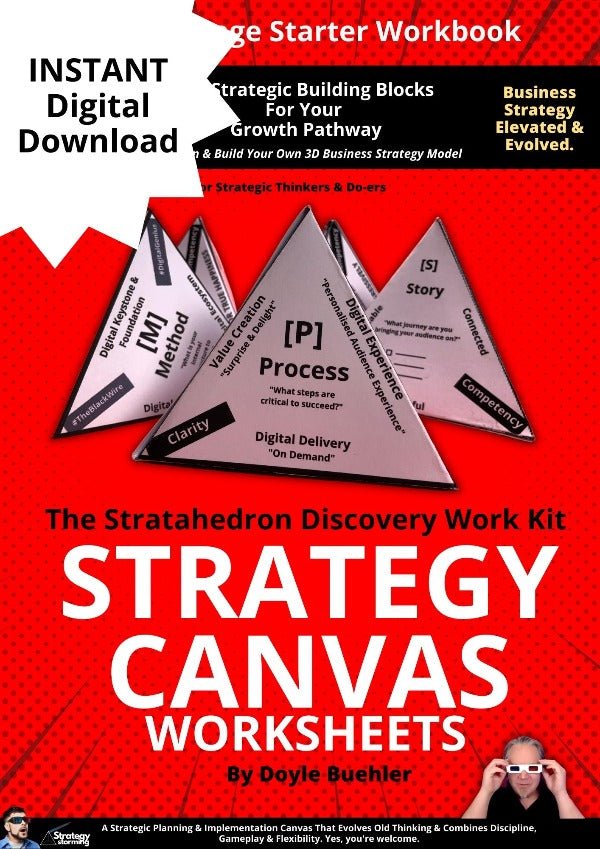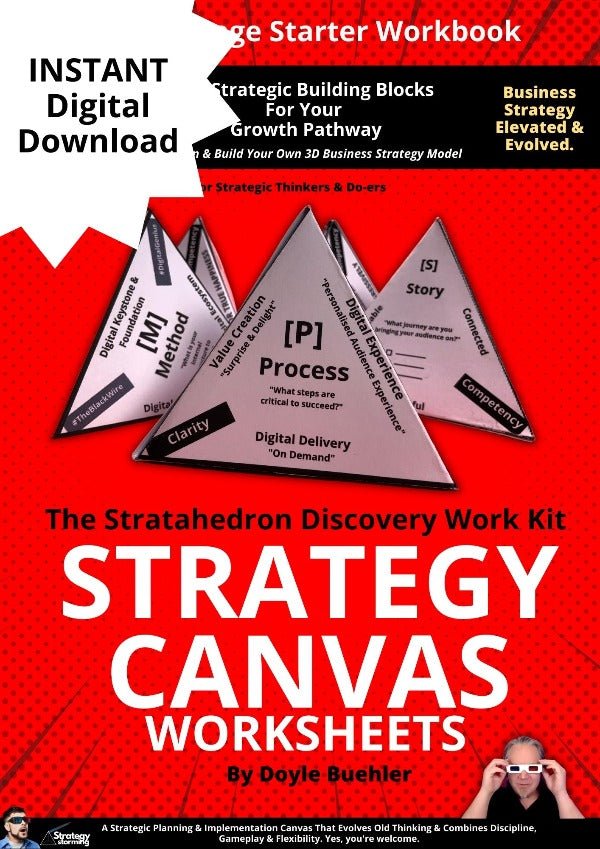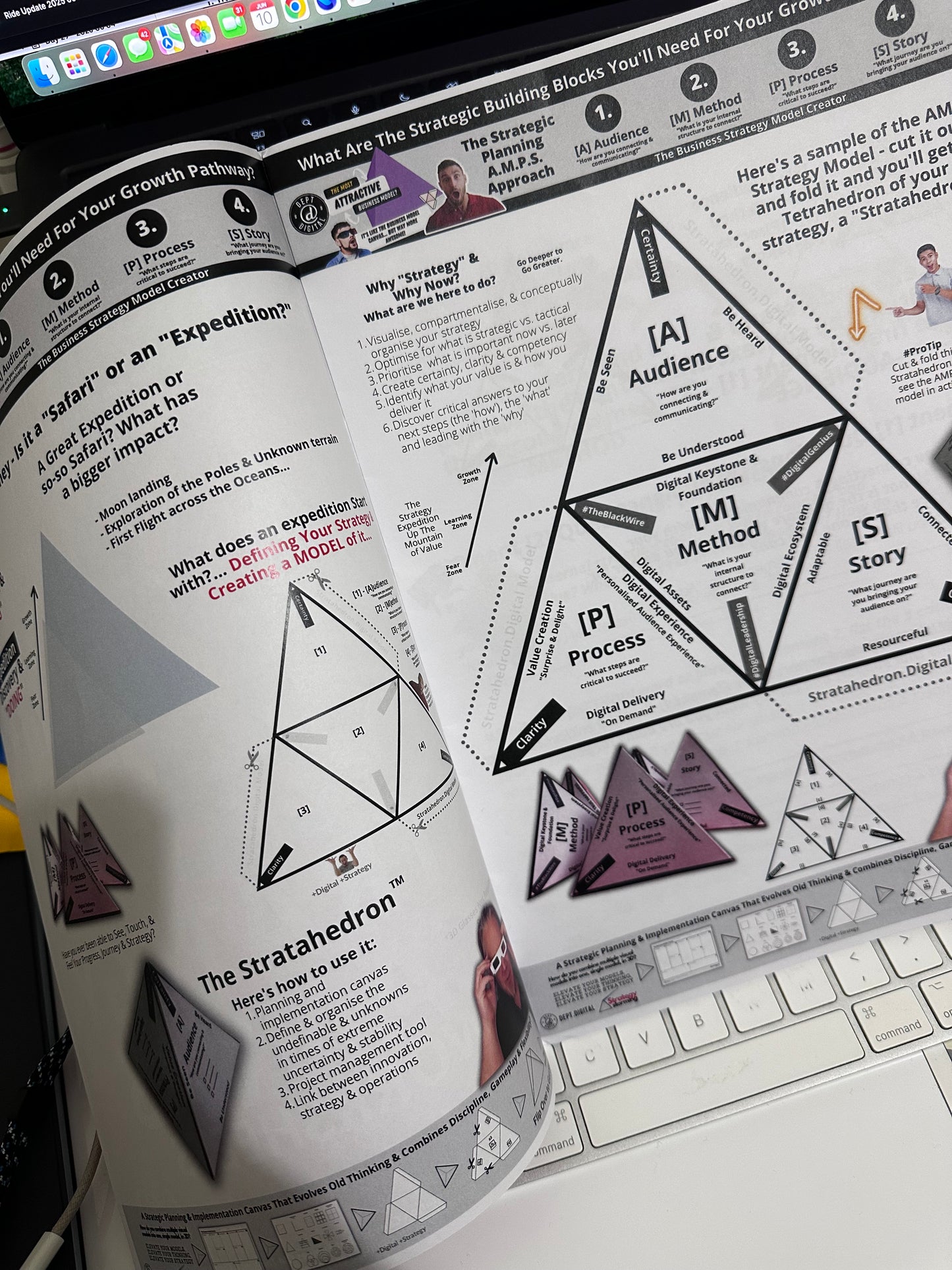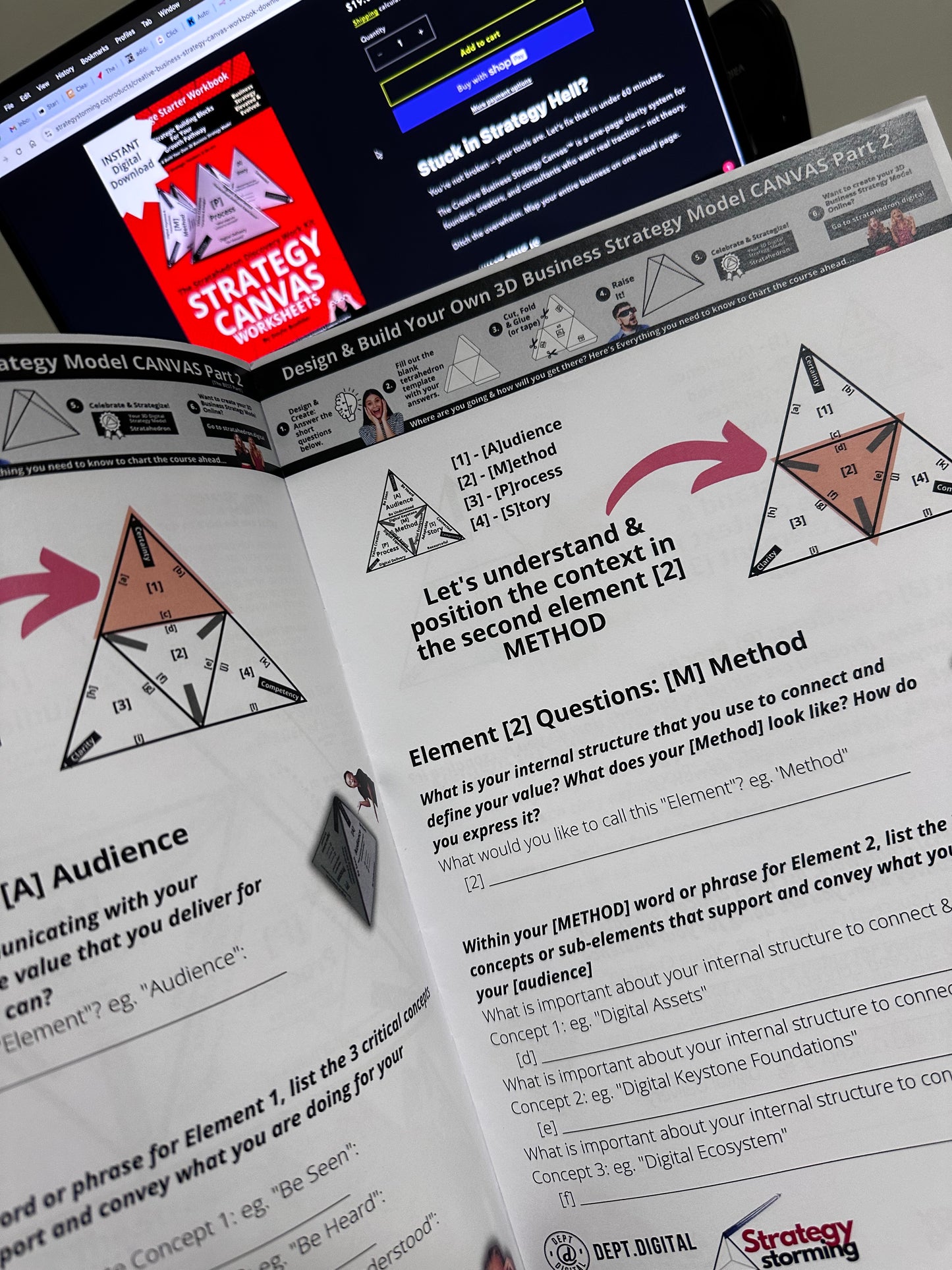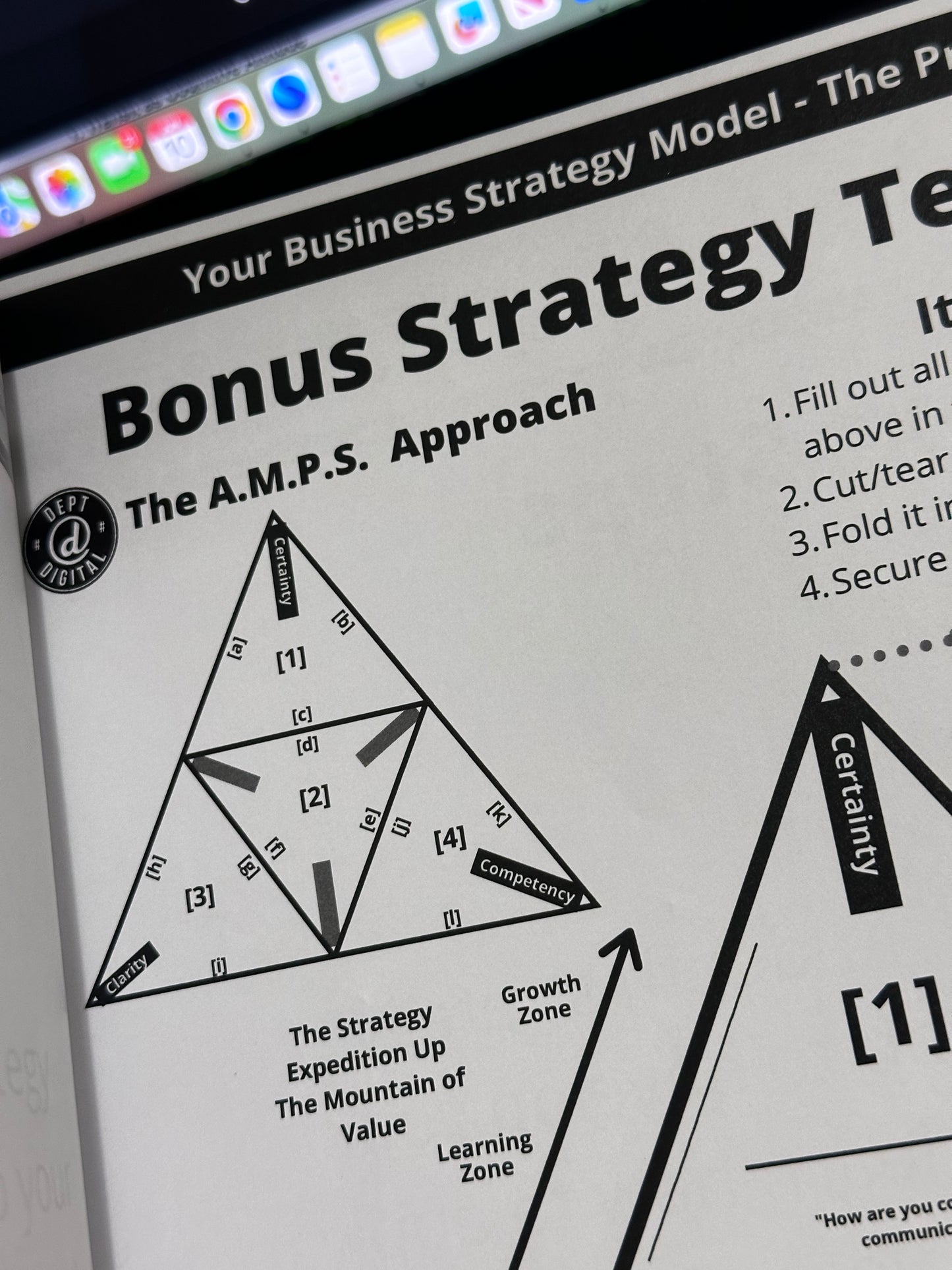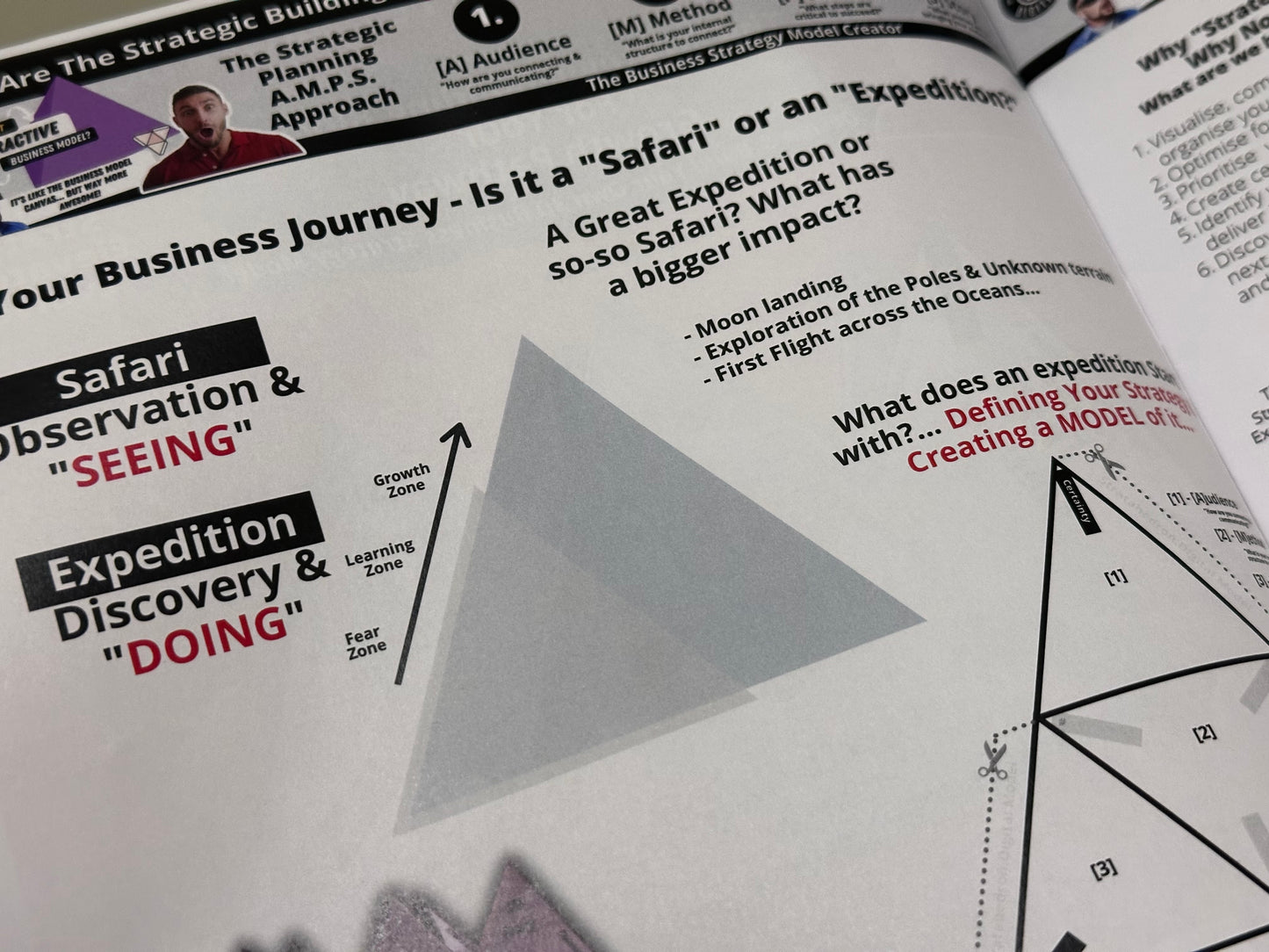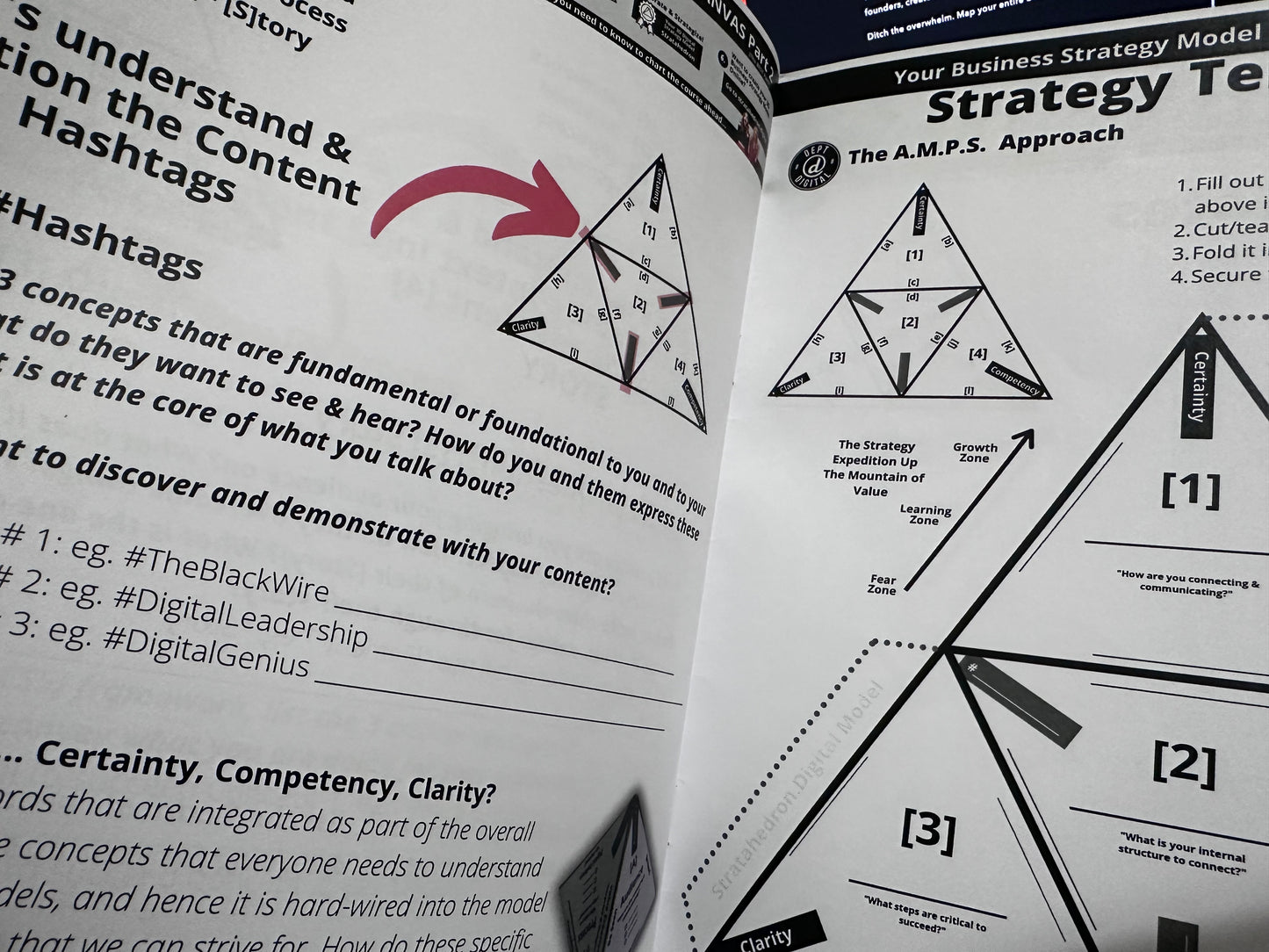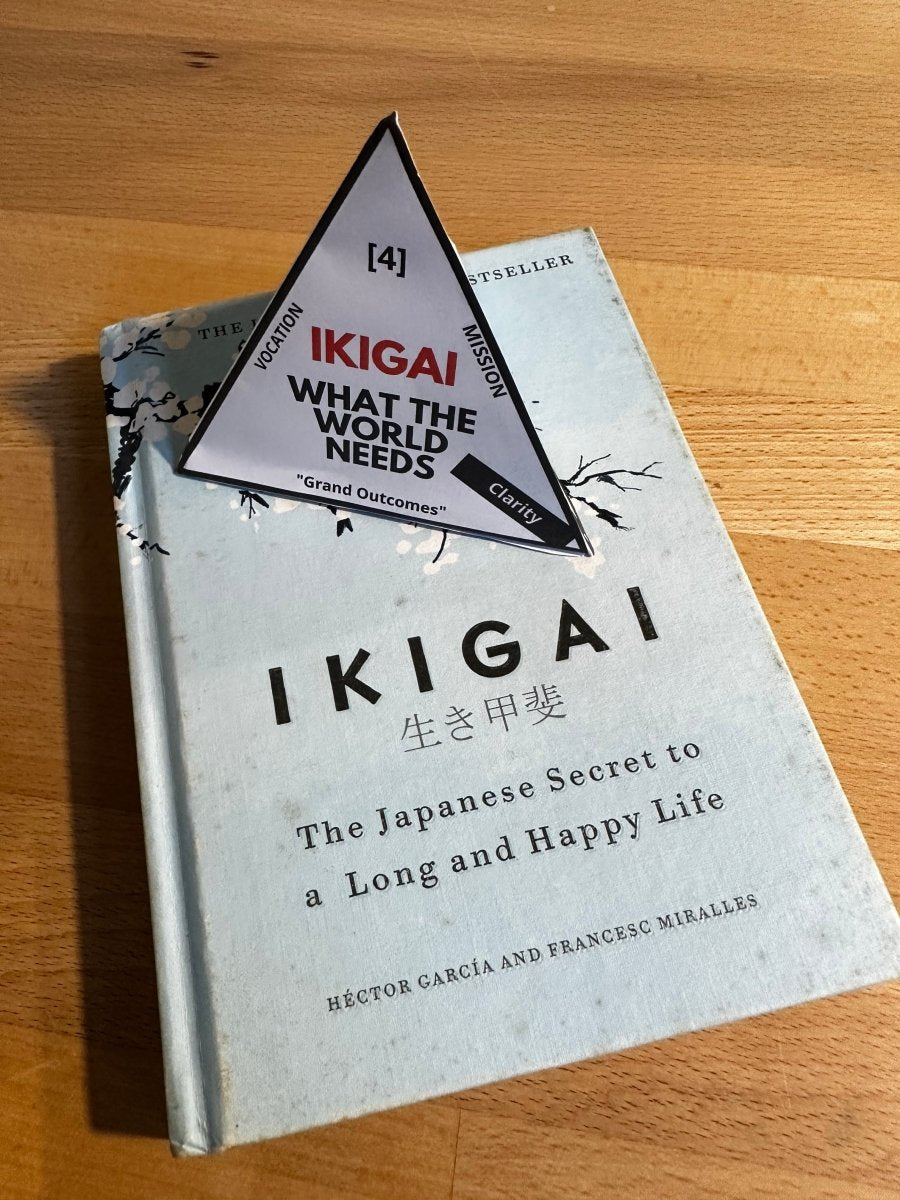
Reimagining & Reinventing Ikigai for Brand Strategy Design Consultants & Strategists
Share
Exploring Brand Strategy Models & Case Studies In Strategy - The Reimagining of the Ikigai Model.
The Strategy Super Model Series
Using the Kotto Brand Strategy Visual Design Tool
Incorporating the concept of "Ikigai" into brand strategy can be a powerful way to create a compelling and meaningful brand that resonates with both the business and its target audience. Ikigai, a Japanese term that translates to "reason for being" or "purpose," centers around the idea of finding and living a purposeful and fulfilling life. When applied to brand strategy, it can help companies develop a strong and authentic identity that connects with customers on a deeper level.
The Core Elements of an Ikigai Transformation For Brand Strategy
Defining the Brand's Purpose:
At the core of Ikigai lies the pursuit of finding one's passion and mission in life. Similarly, a brand's purpose should go beyond simply selling products or services. It should articulate a higher reason for its existence – a clear and meaningful "why" that inspires both employees and customers. Understanding and communicating this purpose helps build a stronger emotional connection with consumers.
Identifying the Target Audience:
Ikigai encourages individuals to align their passions with the needs of the world. In brand strategy, it's essential to identify the target audience whose needs and desires align with the brand's purpose. Understanding the specific group of people the brand aims to serve allows for more tailored messaging and effective engagement.
Creating Unique Value Proposition:
Ikigai emphasizes the combination of what one loves, what the world needs, what one can be paid for, and what one is good at. For a brand, this translates into crafting a unique value proposition that sets it apart from competitors. By aligning the brand's passion and strengths with the needs of the target audience, a compelling and differentiated value proposition emerges.
Consistent Brand Storytelling:
Ikigai involves a sense of authenticity and living in harmony with one's purpose. Brands should likewise maintain consistency in their storytelling and messaging across all touchpoints. A compelling brand narrative that reflects the brand's essence and values will strengthen the emotional bond with customers and create brand advocates.
Long-term Vision and Adaptation:
In the context of Ikigai, individuals strive for continuous growth and improvement. Brands, too, should have a long-term vision and adapt to changing market conditions while staying true to their core purpose. This flexibility and openness to growth allow brands to remain relevant and resilient over time.
Creating Brand Loyalty:
Ikigai fosters a sense of fulfillment and loyalty in individuals' lives. Similarly, brands that resonate deeply with their customers' values and beliefs can inspire loyalty and advocacy. This loyalty extends beyond mere transactions, creating a community of loyal customers who become brand ambassadors.
Creating a Purpose Driven Brand With Ikigai
Integrating the concept of Ikigai into brand strategy can lead to a purpose-driven brand that connects with customers on a more profound level. By defining the brand's purpose, understanding the target audience, crafting a unique value proposition, maintaining consistent storytelling, having a long-term vision, and creating brand loyalty, businesses can build a brand that not only stands out in the market but also brings a sense of fulfillment and purpose to all stakeholders involved.
How Can We Reimagine Ikigai for Strategy Consultants?
Reinventing and reimagining the Ikigai concept as a brand strategy for consultants involves aligning the core principles of Ikigai with the unique attributes and goals of consulting professionals. By doing so, consultants can develop a purpose-driven brand that attracts clients, fosters trust, and brings fulfillment to both the consultants and their clients. Here's how the Ikigai concept can be applied to the brand strategy for consultants:
-
Discovering the Consultant's Purpose: Like individuals seeking their Ikigai, consultants must introspect and identify their own purpose in the consulting field. This involves understanding their passions, expertise, and what drives them to excel as consultants. The brand strategy should highlight this purpose as the guiding force behind the consultant's work.
-
Defining the Target Clientele: Consultants need to identify the specific clientele they aim to serve. Whether it's startups, small businesses, enterprises, or nonprofits, defining the target audience helps in tailoring services, messaging, and value proposition to address their unique needs and challenges.
-
Crafting a Unique Value Proposition: Based on the intersection of the consultant's passion, expertise, and the needs of their target clientele, a unique value proposition should be developed. This proposition should clearly communicate the consultant's specialization, the unique approach they bring to problem-solving, and the tangible benefits clients can expect from engaging their services.
-
Consistent Brand Identity and Messaging: Consultants should create a consistent brand identity that reflects their purpose, values, and expertise. This includes the design elements, tone of voice, and overall brand messaging used across various platforms, such as the website, social media, and marketing materials.
-
Building Thought Leadership and Trust: Thought leadership is crucial in consulting. Consultants can establish themselves as experts in their field by sharing valuable insights, publishing informative content, and speaking at industry events. Demonstrating expertise builds trust with potential clients and positions the consultant as a go-to resource.
-
Long-term Vision and Adaptation: Consultants should have a clear vision of their long-term goals and the impact they want to create through their consulting services. At the same time, they should be adaptable to the evolving needs of their clients and the industry, ensuring their brand remains relevant and effective.
-
Creating Lasting Client Relationships: Building strong relationships with clients is essential for consultants. By deeply understanding their clients' needs, providing personalized solutions, and delivering exceptional service, consultants can create lasting connections that lead to repeat business and referrals.
-
Giving Back and Social Impact: Embracing the altruistic aspect of Ikigai, consultants can incorporate giving back to the community or contributing to social causes into their brand strategy. Participating in pro bono work or supporting charitable initiatives not only creates positive social impact but also aligns with the purpose-driven approach.
Applying the Ikigai concept to the brand strategy for consultants involves discovering their purpose, defining their target clientele, crafting a unique value proposition, maintaining a consistent brand identity, building trust through thought leadership, having a long-term vision, creating lasting client relationships, and incorporating social impact. By doing so, consultants can differentiate themselves in a competitive market, build a strong reputation, and attract clients who align with their purpose and values.

What Does the Ikigai Transformation look like? Putting it into Action for Strategy Consultants
In the competitive world of consulting, establishing a unique brand identity that resonates with both consultants and clients is crucial. Embracing the concept of Ikigai, a Japanese philosophy centered around finding one's purpose and passion, can be a transformative approach to building a purpose-driven brand strategy. By aligning the core principles of Ikigai with the specific attributes of consulting professionals, consultants can create a brand that not only stands out but also brings a sense of fulfillment and meaning to their work. This article explores how consultants can reinvent and reimagine Ikigai as their brand strategy, incorporating specific actions and activities to make this transformation.
- Discovering the Consultant's Purpose:
To begin the Ikigai-inspired brand strategy journey, consultants should embark on self-discovery. They must delve into their passion for consulting, identify their core expertise, and understand what drives them to excel in their field. Engaging in mindfulness practices, introspection, or working with professional coaches can help consultants gain clarity on their purpose.
Specific Action: Keep a reflective journal to explore thoughts and emotions related to consulting experiences, allowing deeper insights into personal passions and motivations.
- Defining the Target Clientele:
Next, consultants need to define their target clientele. Understanding the specific industries, sectors, or organizations they aim to serve allows for tailored services and better alignment with client needs.
Specific Action: Conduct market research and client surveys to identify the target audience's pain points, challenges, and preferences, enabling the development of a client-focused brand strategy.
- Crafting a Unique Value Proposition:
Based on the intersection of the consultant's passion, expertise, and the needs of the target clientele, a compelling value proposition should be created. This proposition should clearly communicate the consultant's specialization, unique problem-solving approach, and the value clients can expect.
Specific Action: Develop a succinct elevator pitch that encapsulates the consultant's purpose, expertise, and the positive impact they bring to their clients' businesses.
- Consistent Brand Identity and Messaging:
To reinforce the brand's purpose and values, consultants should create a consistent brand identity. This includes visual elements, tone of voice, and messaging that resonate with both consultants and clients.
Specific Action: Collaborate with a professional designer and copywriter to create a brand style guide, ensuring visual and verbal consistency across all communication channels.
- Building Thought Leadership and Trust:
Thought leadership is vital in establishing credibility and trust within the consulting industry. Consultants should share valuable insights, publish informative content, and participate in industry events to showcase their expertise.
Specific Action: Start a blog or contribute articles to reputable publications, showcasing expertise and positioning as a trusted advisor in the consulting field.
- Having a Long-term Vision and Adaptation:
Developing a long-term vision is essential for sustainable growth. Consultants should have a clear roadmap for their brand's future while remaining adaptable to changing client needs and market dynamics.
Specific Action: Conduct regular strategic planning sessions to review progress, set new goals, and assess the brand's alignment with its Ikigai-inspired purpose.
- Creating Lasting Client Relationships:
Building strong relationships with clients fosters loyalty and repeat business. Consultants should focus on understanding clients' needs, delivering personalized solutions, and providing exceptional service.
Specific Action: Implement a client feedback system to gather insights, address concerns promptly, and continuously improve client satisfaction.
- Embracing Social Impact:
Embracing the altruistic aspect of Ikigai, consultants can incorporate social impact initiatives into their brand strategy. Giving back to the community or supporting charitable causes aligns with the purpose-driven approach.
Specific Action: Organize pro bono consulting sessions or volunteer for nonprofit organizations related to their expertise, making a positive impact beyond business engagements.
Embracing Ikigai as a brand strategy is a powerful transformation for consultants seeking to create a purpose-driven and fulfilling brand. By discovering their purpose, defining the target clientele, crafting a unique value proposition, maintaining a consistent brand identity, building thought leadership, having a long-term vision, creating lasting client relationships, and embracing social impact, consultants can elevate their brand to new heights. Through these specific actions and activities, consultants can establish a brand that not only attracts clients but also brings meaning and fulfillment to their consulting journey.
How do we Transform the Flat Ikigai Venn Diagram into a Unique Visual, Tactile Tool?

Reimagining and reinventing the Ikigai model with a 3D tetrahedron allows for a more dynamic representation of the concept, adding depth and perspective to each element. In this 3D model, called a Kotto, each side of the tetrahedron corresponds to one of the four main elements of Ikigai: Passion, Mission, Vocation, and Profession. Let's explore the interfaces between the 3D sides and the key points of this reimagined model:
- Passion (Emotional Side): Passion represents what consultants love and what brings them joy and fulfillment. In the 3D model, this side is visually depicted as the emotional aspect of the tetrahedron. It is at the core of the model, representing the essence of the consultant's Ikigai.
Key Points:
- Identify your true passions: Consultants should deeply explore their interests, hobbies, and what ignites their enthusiasm in the consulting profession.
- Align with personal values: The intersection of passion and values creates a strong foundation for building an authentic brand.

- Mission (Ethical Side): Mission represents the consultant's mission or purpose in the consulting field. This side of the tetrahedron focuses on the ethical and moral aspects of the brand strategy.
- Define your purpose: Consultants should articulate the higher reason for their consulting work and how they aim to contribute positively to their clients and society.
- Establish a meaningful impact: Consultants should consider the larger impact they want to create through their consulting services.
- Vocation (Functional Side): Vocation refers to what consultants are good at and where their unique expertise lies. In the 3D model, this side represents the functional aspect of the brand strategy.
Key Points:
- Identify your core expertise: Consultants should recognize their strengths and the areas where they excel in the consulting domain.
- Specialize and differentiate: Focusing on specific areas of expertise allows consultants to differentiate themselves in the market.

- Profession (Financial Side): Profession represents the practical side of consulting – how consultants can earn a living from their passion and expertise. This side of the tetrahedron deals with the financial sustainability of the brand strategy.
Key Points:
- Find market demand: Consultants should research and assess the market demand for their services to ensure a viable and sustainable business.
- Set clear financial goals: Align financial aspirations with the brand's purpose to strike a balance between profitability and fulfilling the brand's mission.
Interfaces between 3D Sides: The beauty of the 3D tetrahedron lies in the interfaces between its sides. Each side influences and interacts with the others, demonstrating the interconnectedness of the elements in a consultant's Ikigai-inspired brand strategy.
-
Passion and Mission: The emotional core of passion must align with the purpose-driven mission, ensuring that the consultant's enthusiasm is directed towards meaningful work.
-
Mission and Vocation: The consultant's purpose guides their area of expertise, ensuring that their skills and knowledge are applied to create a positive impact.
-
Vocation and Profession: By specializing in a particular domain, consultants can deliver value to clients, leading to financial sustainability.
-
Profession and Passion: A well-executed brand strategy that aligns with passion and expertise generates client satisfaction and referrals, contributing to financial success.
What You Can Do with a 3D Model: A 3D model of Ikigai offers a more holistic and tangible representation, enabling consultants to:
-
Visualization: Consultants can visualize the interconnectedness of the elements, providing a deeper understanding of how each aspect influences the brand strategy.
-
Innovation: The 3D model encourages creative thinking, enabling consultants to explore unique ways to integrate passion, mission, vocation, and profession into their brand.
-
Dynamic Planning: Consultants can develop more comprehensive plans by considering the interactions between elements, ensuring a balanced and purpose-driven brand strategy.
-
Interactive Presentation: When presenting the brand strategy to clients or stakeholders, a 3D model adds depth and engagement, making it easier to communicate the consultant's unique value proposition.
Reimagining the Ikigai model as a 3D tetrahedron offers a powerful approach for consultants to develop a purpose-driven brand strategy. By visualizing the interfaces between passion, mission, vocation, and profession, consultants can foster a deeper understanding of their brand's purpose and create a more impactful and fulfilling consulting journey. The 3D model allows for innovation, dynamic planning, and interactive presentations, elevating the brand strategy from a mere plan on paper to a tangible and transformative visual representation.
Watch the Ikigai Transformation In Process
Watch the visual and strategic transformation as we take the Ikigai model and transform it into a 3D Strategic tool to help align and see what it can really look like as we assemble it into the Kotto Strategy Design Tool.
Get Your Free Ikigai Kottō Strategy Model - Download Now.
Download your FREE Ikigai Kottō PDF model that you can print and fold into your own Ikigai Kottō. This model is preformatted in a flat A4 PDF that you can print out and fold into the shape of the Kottō, the strategy tetrahedron.
Using the Brand Strategy Visual Tool Designing - The Kottō
The Japanese word "Kottō" (骨統) is the perfect name for the 3D brand strategy design tool, representing the interconnectedness of the four elements - Passion, Mission, Vocation, and Profession. "Kottō" translates to "curiosity" or "framework," encapsulating the essence of how these elements form the foundational structure of the brand strategy.

- Provoking Curiosity and Creativity:
The name "Kottō" itself provokes curiosity, as it may be unfamiliar to many outside of Japan. This curiosity draws attention to the brand strategy, encouraging individuals to explore and delve deeper into its meaning and implications. As people become curious about the concept, they are more likely to engage with it, opening the door to creativity.
Additionally, the unique and unfamiliar nature of the term "Kottō" invites creativity. It sparks innovative thinking and prompts consultants to explore fresh ways of approaching brand strategy. This creativity is essential in developing a purpose-driven brand that stands out in the market and resonates with both consultants and clients.
- Inspiring New Ways of Thinking and Problem Solving:
By using the name "Kottō" for the 3D brand strategy tetrahedron, consultants are prompted to adopt a more holistic and interconnected perspective. This shift in thinking challenges the traditional linear approach to brand strategy, leading consultants to consider the interplay between Passion, Mission, Vocation, and Profession.
The 3D nature of "Kottō" inspires consultants to think beyond the surface and explore the depth of their purpose and expertise. They are encouraged to consider how these elements influence one another and to identify creative solutions that align with their brand's overarching mission.
- Building a Strategy with Purpose:
The name "Kottō" reinforces the idea of building a strong and purposeful brand strategy with curiosity. Kottō is "Curio". Just as a curious structure provides support and stability to a body, the elements of Passion, Mission, Vocation, and Profession form the backbone of the brand strategy, giving it direction and focus.

Moreover, "Kottō" emphasizes the importance of having a solid framework in place for the brand strategy to thrive. By considering how each element complements and strengthens the others, consultants can construct a brand strategy that is cohesive, sustainable, and purpose-driven.
Naming the 3D brand strategy tetrahedron as "Kottō" adds a layer of cultural curiosity and intrigue to the concept, inviting consultants to explore and embrace its underlying principles. It sparks creativity and innovative thinking, inspiring consultants to consider new ways of problem-solving and planning their brand strategies. By recognizing the interconnectedness of Passion, Mission, Vocation, and Profession, "Kottō" encourages consultants to build purposeful brand strategies that resonate deeply with their values and aspirations, setting the stage for long-term success and meaningful impact.
Get Your Free Ikigai Kottō Strategy Model
Download your FREE Ikigai Kottō PDF model that you can print and fold into your own Ikigai Kottō. This model is preformatted in a flat A4 PDF that you can print out and fold into the shape of the Kottō, the strategy tetrahedron.
The Merging of the Ancient Japanese Art of Origami, The Curiosity of the Kottō, And Brand Strategy Design
The ancient Japanese art of origami and paper folding adds a beautiful and culturally rich dimension to the concept of "Kottō" and the 3D brand strategy tetrahedron. Origami is the art of folding paper into intricate and creative shapes, often with deep symbolic meanings. It shares a close relationship with the concept of "Kottō" and the elements of Passion, Mission, Vocation, and Profession, making it a fitting addition to this brand strategy approach.
- Origami and Creativity:
Origami embodies the essence of creativity, just like the concept of "Kottō" provoking curiosity and inspiring new ways of thinking. The process of folding a flat piece of paper into a 3D shape requires imagination and innovation. Similarly, building a brand strategy with "Kottō" involves creative thinking, finding unique solutions, and adapting the elements to fit together harmoniously.
- Origami's Symbolic Meaning:
Origami is often associated with symbolism and representation. Different origami shapes hold specific meanings and cultural significance. In the context of "Kottō," the act of folding paper represents the process of crafting and refining the brand strategy. Each fold symbolizes the careful consideration and alignment of the elements, reflecting the interconnectedness of Passion, Mission, Vocation, and Profession.
- Precision and Purpose:
Origami requires precision and attention to detail to achieve the desired form. In the same way, the "Kottō" brand strategy involves meticulous planning and alignment of the four elements to create a purposeful and coherent whole. The commitment to precision in both origami and brand strategy signifies the importance of crafting a strategy with a clear purpose.
- Origami as a Visual Representation:
Using origami as a visual representation of the 3D brand strategy tetrahedron reinforces the interconnected nature of Passion, Mission, Vocation, and Profession. As the consultant folds the paper, they visualize how each element impacts the others, ultimately leading to the formation of a well-balanced and purpose-driven brand strategy.
- Cultural Connection:
The integration of origami into the brand strategy with "Kottō" establishes a cultural connection with Japan. This connection pays homage to the Japanese heritage and philosophy, adding depth and significance to the approach. It showcases the universality of art and creativity as vehicles for expressing and exploring purpose and meaning.
- Visualizing Transformation:
Origami's transformative nature - taking a 2D flat sheet and turning it into a 3D shape - symbolizes the transformative potential of "Kottō" brand strategy. Just as origami unfolds from simplicity to complexity, the brand strategy evolves from exploration and self-discovery to a comprehensive, purpose-driven plan.
The integration of the ancient Japanese art of origami and paper folding into the "Kottō" brand strategy enhances the concept's beauty, meaning, and cultural significance. Origami's creativity, symbolic representation, precision, and transformative nature all mirror the essence of the 3D brand strategy tetrahedron. It serves as a visual representation of how Passion, Mission, Vocation, and Profession come together in a harmonious and purposeful way, adding depth and enriching the experience of crafting a brand strategy that truly aligns with a consultant's values and aspirations.
Get Your Free Ikigai Kottō Strategy Model - Download Now.
Download your FREE Ikigai Kottō PDF model that you can print and fold into your own Ikigai Kottō. This model is preformatted in a flat A4 PDF that you can print out and fold into the shape of the Kottō, the strategy tetrahedron.
Watch the Ikigai concept unfold for you as a new visual brand strategy design tool.
Related Posts
-

How to Use Strategy to Improve Revenue: A Comprehensive Guide
Finding ways to improve revenue is essential & possible with Strategy
-
![The Entrepreneur Journey is Broken? [Part 1] - Strategystorming - The Strategy Studio & Shop for Strategic Thinkers](//strategystorming.co/cdn/shop/articles/the-entrepreneur-journey-is-broken-part-1-590109.webp?v=1701206679&width=170)
The Entrepreneur Journey is Broken? [Part 1]
What if the Entrepreneur Journey could be different?
-

Creating Certainty in an Uncertain Business Environment with The Business Design Strategy Sprint
-

How do you build a Strategy Operating System?
-

Business Strategy Mastery Workshop - Strategy Masterclass October 2022 Intake - Session Now Closed
Business Strategy Mastery Workshop - Strategy Masterclass October 2022 Intake Now Closed. It's time to rethink & reinvent how we think about strategy, but also how we understand, design, and create it. Get the thinking, tools, and know-how to craft business strategy like never before.
-

8 Simple Questions Every Strategy Must Answer to Be Able to See Your Greatest Competitive Advantage
Your biggest competitive advantage that you can ever have is how you think and how you problem solve better than anyone else, especially in these challenging times.
This is your strategic thinking, only you have it, and your future really does depend on it.
-

Is Business An Art Or More About Science? Hint: It's Neither
👉Being more clever
👉Being more creative
👉Being more skillful
👉Thinking more strategically
👉Reducing complex ideas & problems
👉Crafting uncommon solutions
👉Embracing complexity
-

Is Your Strategy Still Just a Pile of Notes and Guesswork?
The Creative Business Strategy Canvas™ is the clarity tool I built after hitting that wall one too many times.It’s one page. Visual. Brutal. Honest.
It shows you your business — as it actually is — so you can build what it’s meant to be.
-

Reinventing Rapid Business Growth With The Strategy SuperModels
Enter The World of Business Strategy SuperModels - Redefine and Reinvent
-

Unlock Business Growth with The Growth Pathway Strategy GPS SuperModel
Unlock Business Growth with The Growth Pathway Strategy GPS SuperModel
-

4 Strategic Steps to Rethink and Reimagine SWOT Analysis for Your Business
Here's How to Reimagine & Customize your SWOT with a Custom SWOT Analysis Worksheet
-
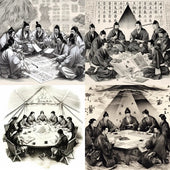
Exploring Brand Strategy SuperModels & Case Studies in Strategy
-

FlightPath Day 80 of 100: Rhythm Over Hustle - How Founders don’t burn out from work
-

Want to Obtain Better Business Results in 4 Easy Steps? Keep it Simple - Here's A Really Simple Strategy With BIG Impact
-

10 Must-Haves to Master Your Digital Landscape - The Strategy Playbook
Transform Your Business Online With Clearcut Success Strategies In This Strategy Playbook
-

Do You Want to Lose Track of Your ‘Why’ & ‘How’ amongst all of the ‘WTFs’?
You’ll build out your business journey as your “FlightPath” with a close-knit group using the wisdom of your peers for reimagining your perspective, driving your OWN priorities & finding your OWN critical solutions.
-

How to Use Strategy to Improve Brand Awareness - The Brand Strategy Guide
Here's How to Use Strategy to Improve Your Brand Awareness
-

How to Use Strategy to Improve Market Share: What's Really Important?
How Do You Improve Market Share With Strategy?
-

How to Use Strategy to Improve Innovation - Your Innovation Playbook
Understanding the Connection Between Strategy and Innovation
-

How to Use Strategy to Improve Growth - A Definitive Guide
Strategy is an ongoing, dynamic process of Growth
-

10 Rules of a Strategy-Focussed Entrepreneur That Really Matter
What's really important for a strategy-focussed entrepreneur?
-

10 Rules That Really Matter for a Digital-Focussed Enterprise
Here's 10 simple rules to see if you are a digital-focussed business.
-

10 Invaluable Strategic Business Insights for Today’s Highly Competitive Business Environment.
10 invaluable insights for today’s highly competitive business environment using The Art of War
-

The Strategic Planning Success Blueprint: Navigating the Complex World of Planning With The Strategic Planning Checklist
-

The Annual Strategic Planning Panic Season Has Begun! Ditch the Drama, Embrace the Plan: Less Zigging, More Winning!
Strategic Planning Panic Season. Ditch the Drama, Embrace the Plan: Less Zigging, More Winning!
-

Unlock Your Business Brand Secrets: Master Your Brand & Strategy with the Strategystorming Sprint.
Don't let market disruptions steer you off course; take the helm of your business with unwavering confidence by mastering the art of strategic planning. This is your roadmap to not just surviving but thriving in today's volatile business landscape.
-

Can AI make you MORE Creative, Curious, Innovative AND more strategic? Yes or no?
Can AI make you MORE Creative, Curious, Innovative AND more strategic? Yes or no?
What if it could?
-

What You Think You Already May Know About Cognitive Biases...May Be Wrong
-
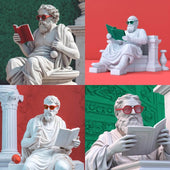
A Good Strategic Thinker And A BETTER Strategic Thinker - What's The Difference?
Improve your strategic thinking skills and increase your growth potential.
-

Good Strategy vs Bad Strategy. 5 Simple Symptoms To Identify a Really Bad Strategy.
What are the symptoms and signals that can help diagnose a potentially Good Strategy vs an ineffective Bad strategy?
-

Why Your Strategy Must Not Become A To Do List - The Only 5 Strategic Questions You Cannot Exist Without
By taking the time to answer these questions, you can develop a clear understanding of your company's purpose, its big idea, and how you're going to deliver value to your customers. This will help you to stay focused and on track as you build your business.
-

IMPACT: What would you actually do if you had more of it for your business?
Here's how to find and start to build your impact that lasts with digital strategy
-

The Business Top Gun's Playbook: Harnessing Speed of Strategy and Strategic Direction for Navigation for Impact
-

Which 4 Critical Components You Might Be Missing With Your Strategy - Here's How to Make Your Strategy Quicker, Cheaper & Easier
Is Your Strategy Too Hard? Here's How to Make Your Strategy easier to create, implement & execute without breaking a sweat
-

Strategystorming For Your Future: How Can Reinventing Strategy Help Future-Proof Your Business?
The Future May Be Uncertain, But You Don't Need To Be.
Strategystorming is a powerful tool for achieving success and creating a brighter future. By taking control of your destiny and developing effective strategies, you can overcome any obstacle and achieve your goals, no matter how big or small. -

The Power Of The Prompt - The Strategic Look At Artificial Intelligence Alignment & Business
-

Do You Have A Brand Plan? Here's how to Rethink & Stack the odds and start winning with a brand strategy
-

The 5 Key Strategic Factors You Need To Consider to Integrating AI into your Business Now. Here's How To Get Started to Integrate AI Effectively Into Your Business
5 Key Strategic Factors You Need To Consider In Integrating AI into your Business
What would happen if 80% of what you do is commoditized into the same thing that everyone else is doing? If you can no longer compete on price, and everything is now a commodity, what would you do? How can you accelerate your business while everything is accelerating around you?
-

What's Good Strategy or Bad Strategy? Fighting Fires Is No Longer a Startup Badge of Honour. We need to Reinvent How We Think About Strategy For Startups.
What's Good Strategy or Bad Strategy? Fighting Fires Is No Longer a Startup Badge of Honour. We need to Reinvent How We Think About Strategy For Startups and Smart Strategy for Business.
-

Sometimes we can be extremely surprised at how 'strategic' some things are when we compare it to other things. Here's a case in point.
Here's a case in point about how to get epic things done...strategically - without trying that hard.
-

Anyone can start a business, but can you finish one? Can you get yours to the finish line without a strategy?
Anyone can start a business, but it takes a special skill to finish one - strategy builds a business built to last. Are you building your business to last? It’s not a map, not a business model, not a SWOT, not a business plan, not a 1-page Marketing Plan; it's your strategy operating system that defines the difference.
-
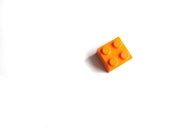
Strategy is about change, and we are all architects of change with our strategic thinking
You're In The Business of Change. You Just Don't Know It...Yet.
What does it take to see Change?
How do we adapt change and think more strategically in the solutions that we deliver, and want to deliver?
-

Why being agile doesn’t save a small business? It’s more about your strategic thinking.
The solution to being agile is more about strategy and your strategic thinking ability
-

The Strategystorming Strategy Studio & Shop Launch Event Speakers Summary
It's strategic clarity & #certainty to help you know how to craft a better strategy, and use strategic & tactical tools for profitable growth and a superior ROI by leveraging the power of your brand.
-

The True Power of Reinvention for Business & Rethinking How We Create Remarkable, Winning Strategies - The Strategystorming Strategy Studio & Shop Launch
-

The Truth About What You Should Be Focussing More On in Your Business - Hint: It's 99% invisible
We don't investigate fully how our customers and audience are thinking - we simply gloss over what we think they need. We rarely feel that we 'need' a strategy to enhance what we're doing to drive profitability and how to win - or that it's something that only big companies have to do to please their corporate rulers. And, seldom do we use any systems to create better efficiencies.
-

How Easy Is It To Sacrifice Tomorrow for Today, Without Even Knowing It? Are You A Slave To The Now Because of Your Strategy in Business?
How Easy Is It To Sacrifice Tomorrow for Today, Without Even Knowing It? Are You A Slave To The Now Because of Your Strategy in Business?
-
![#SmartStrategy [Designing Your Strategy For Business] - Strategystorming - The Strategy Studio & Shop for Strategic Thinkers](//strategystorming.co/cdn/shop/articles/smartstrategy-designing-your-strategy-for-business-256943.jpg?v=1693515536&width=170)
#SmartStrategy [Designing Your Strategy For Business]
Strategy is often what you need to do, but also what you don't need to do. It tells you what you see, but also what you don’t see.
-

Is Bigger All There Is in Business? What does the word GROWTH actually mean for GROWING a business?
If only we could grow more, if only we could scale more, if only we could...
-

Is 'Bigger' All There Is? Reinventing & Rethinking Your Business With Strategy
Strategystorming is the new thinking place where we become better strategic thinkers, by applying strategy here and now, sharing what strategy is for business, and how best to realise it and craft it into remarkable experiences.
-
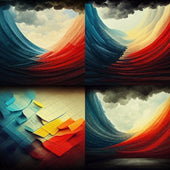
Do You Know The Biggest Reasons Why a Business Fails? It's Not Because of Tech & Creativity
Why does a business fail, and what can you do about it?
Planning & #strategy is not a "to-do list"
It's not even a list of goals you want to achieve, or "what do you want to become in 2022?" (are you a flower? 😂)
-

What will it take for things to return to business as usual?
It's not business as usual anymore. The Easy Strategy Lab is where we find out how to Reinvent & Reimagine & Rethink business.
We are back with a Strategystorming Show on the 4 greatest myths about strategy, change & reinvention - the misconceptions and outdated assumptions that might be killing your efforts or the efforts of your clients today.
-

Strategy Expeditions for Reinvention, Growth & Performance by Strategystorming - The Strategy Mastery Training Course Workshop
What's Creative Intelligence & Strategic Innovation?Learning strategy and implementation with creative tools and storytelling.Unleash the potential within your business or clients to solve your unique business challenges and create dynamic resilient futures.Meet our Creative Intelligence and Strategic Innovation course - Strategy Mastery Training.
It's education, but not as you know it.
It's a workshop Expedition - a Strategy Expedition to get you to your destination... and back, learning, creating, understanding and crafting your ultimate strategy of resilience & success.


![The Entrepreneur Journey is Broken? [Part 1] - Strategystorming - The Strategy Studio & Shop for Strategic Thinkers](http://strategystorming.co/cdn/shop/articles/the-entrepreneur-journey-is-broken-part-1-590109.webp?v=1701206679&width=170)













































![#SmartStrategy [Designing Your Strategy For Business] - Strategystorming - The Strategy Studio & Shop for Strategic Thinkers](http://strategystorming.co/cdn/shop/articles/smartstrategy-designing-your-strategy-for-business-256943.jpg?v=1693515536&width=170)




